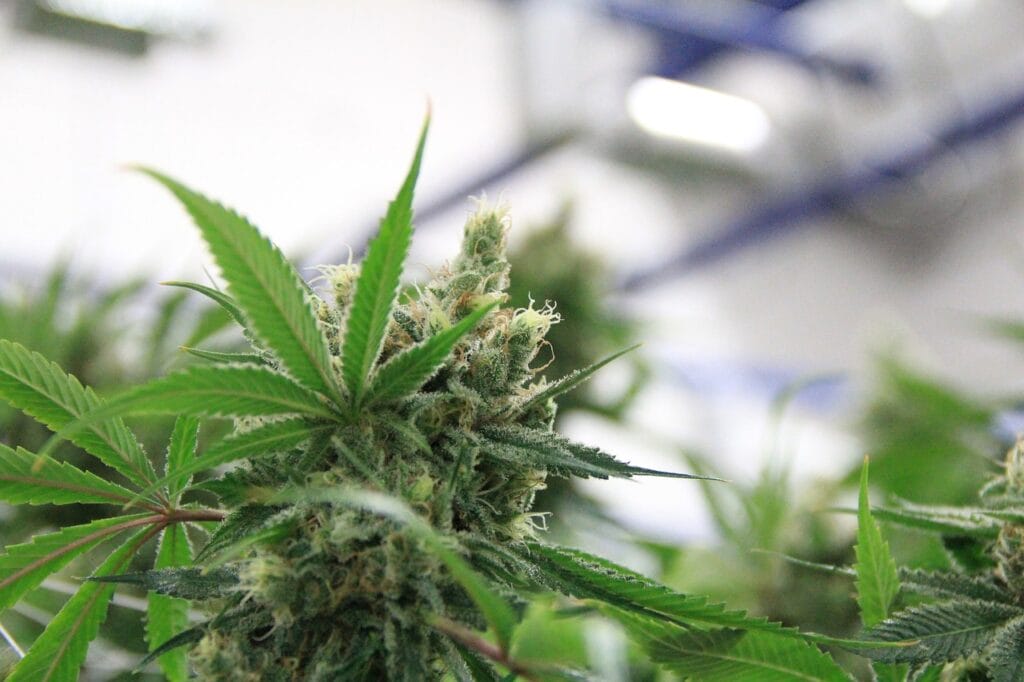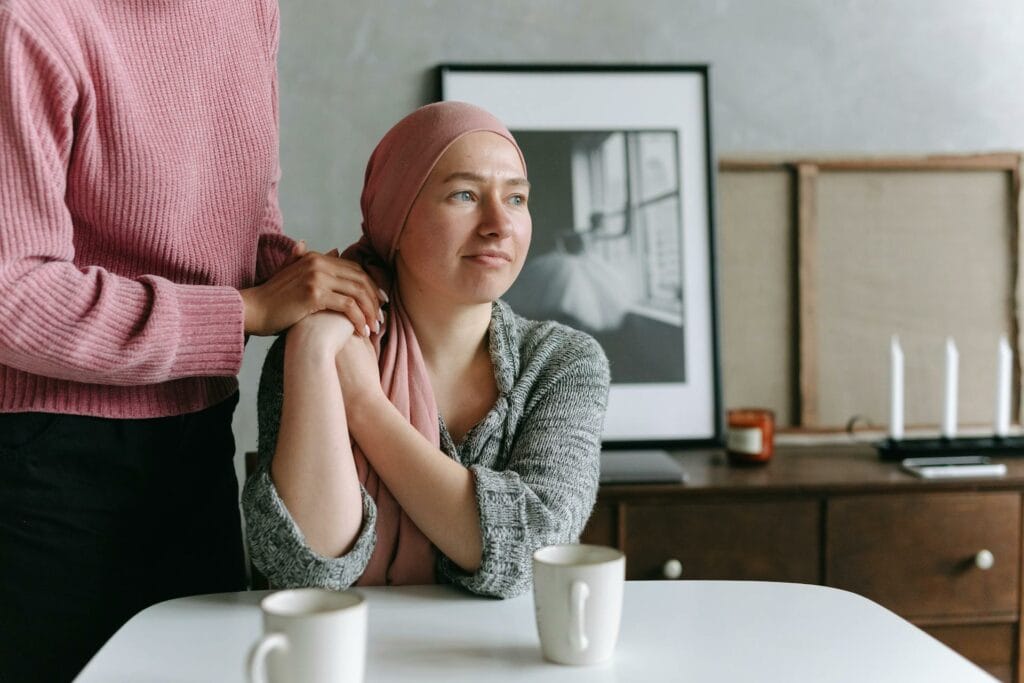Night sweats are common in end-stage cancer patients, significantly disrupting sleep and quality of life.
Despite various proposed treatments, effective management of night sweats remains a challenge. Some treatments can have hot flushes with palpitations and anxiety, leading to fatigue, depression, and reduced function – affecting 10-48% of cancer patients.
As a result, many are now searching for alternatives. Researchers suggest people buy Indica online to combat cancer-induced night sweats. Let’s explore this potential treatment further.
Table of Contents

What are Cancer-Induced Night Sweats?
Sweating is the body’s way of regulating temperature. But night sweats indicate confusing messages to the body’s thermostat.
Night sweats are episodes of excessive perspiration that occur during sleep. Those affected commonly wake with damp bedclothes, increased heart rate, and chills. The cancer itself may cause them.
Treatments
- Hormone Therapy (HT). Effective but with caution. It is not suitable for women who have breast cancer. Men can use estrogen or progesterone after prostate cancer treatment.
- Antidepressants. Mainly paroxetine, an antidepressant called SSRI. It’s commonly used to treat depression and can also help with OCD, panic attacks, anxiety, and PTSD.
- Clonidine. A blood pressure medication.
- Anticonvulsants. Act by altering electrical activity in neurons by affecting ion channels (sodium, potassium, calcium, chloride) in the cell membrane.
- Oxybutynin: Treats symptoms of an overactive bladder, such as incontinence (loss of bladder control) and frequent urination.
Other Treatment Options
- Relaxation Techniques. Reducing stress and anxiety may help relieve hot flashes.
- Hypnosis. This can help you relax, feel cooler, lower your heart rate, and balance your body temperature.
- Acupuncture. Mixed results; consult your provider if interested.
Do Cannabinoids in Cannabis Stop Night Sweats?
Marijuana’s cannabinoids, known to modulate cytokine activity and induce hypothermia in animal models, may offer potential relief for these symptoms in cancer patients.
A study conducted by scholars from San Francisco State University and Stanford University School of Medicine aimed to evaluate the effectiveness of oral dronabinol (a synthetic cannabinoid) in alleviating night sweats in cancer patients.
Methods
- They identified five cancer patients who used oral dronabinol for night sweats between 2013 and 2016 and assessed its effectiveness through their subjective reports.
- Patients with ages ranged from 29 to 72 years, including both males and females with various cancers (acute myeloblastic leukemia, colon cancer, rectal cancer, and breast cancer).
- The dronabinol doses varied, with most starting at 5 mg at bedtime, adjusted based on symptom severity and tolerance.
Results
All 5 patients reported a reduction in night sweats following dronabinol treatment.
- Two patients experienced complete resolution, while the other three noted significant reductions in the severity of their symptoms, with less frequent need to change clothes or bed sheets.
- One patient discontinued dronabinol due to sedation but observed a return of night sweats upon stopping the medication.
| Patient | Gender | Age | Diagnosis | Dronabinol Dose | Response |
| 1 | F | 67 | Acute myeloblastic leukemia, hemochromatosis | 5 mg HS | Significant improvement in sleep |
| 2 | M | 72 | Rectal cancer with lung and bone metastases | 2.5 mg BID | Complete resolution of cold sweats |
| 3 | F | 50 | Ductal carcinoma in situ of the breast | 5 mg TID, up to 10 mg | No night sweats, improved sleep |
| 4 | M | 47 | Metastatic colon cancer | 5 mg HS | No night sweats after 3 days |
| 5 | M | 29 | AML post stem cell transplant | 5 mg HS | Significant reduction in both night and day sweats |
Discussion
This case series suggests that dronabinol effectively managed cancer-induced night sweats and improved patients’ quality of life.
The rapid symptom relief observed within one week for all patients highlights dronabinol’s potential as a therapeutic option. However, the study’s limitations include its retrospective nature and small sample size. Further randomized controlled trials are fully required to validate these findings.
Why Indica Strain?
A 2007 study from Japan suggests that the endocannabinoid system, especially CB1, may regulate body temperature independently of the hypothalamus.
Pure dominant strains or an Indica dominant hybrid strain is known for inducing relaxation and improving sleep–ideal for cancer-induced night sweats. In 2008, scientists found that Nabilone, a synthetic cannabinoid similar to THC, effectively treated night sweats in cancer patients. This treatment improved sleep and quality of life, also alleviating pain, anorexia, and nausea.
CB1 receptors (mainly found in the brain and central nervous system), including the sympathetic nervous system and hypothalamus, are involved in perspiration. The synthetic cannabinoid Nabilone, similar to THC, can influence perspiration patterns.
While Sativa strains with higher THC ratios might seem logical, Indica strains are recommended for a balanced approach. Indicas activate CB1 receptors to address night sweats and activate CB2 receptors for a calming and restful state.
Overview of Indica Strains
| Appearance | Indica plants are shorter than Sativa weed plants. Its plant is bushier with broad leaves. |
| Effects | Calming, sedative, and body-focused. |
| Medical Uses | Pain relief, insomnia treatment, anxiety reduction, appetite stimulation. |
| Origin | Indica flowers originate from the Hindu Kush mountain range regions. |
Buy Indica Online – Strains to Manage Night Sweats
| Strain | Berry Blue | Forbidden Fruit (Popcorn) | Grandpa’s Breath |
| Flavours | Sweet, Blueberry | Tropical, Grapefruit | Grape, Lavender |
| THC Content (%) | 20 | 24 | 21 |
| CBD Content (%) | 0.5 | 0.4 | 0.7 |
| Genetic Background | Purple Thai x Thai | Cherry Pie x Tangie | OG Kush x Granddaddy Purple |
| Notable Effects | Long-lasting euphoria, pain and stress relief | Deep physical relaxation, mental stoniness, stress relief | Functional relaxation, deep relaxation |
You can also explore and buy Indica strains like Northern Lights, Bubba Kush, Death Star, Hindu Kush, and Grease Monkey to provide relief.

The Key Takeaway
Cancer-induced night sweats can be challenging to manage with standard treatments, impacting patients’ lives significantly. Oral dronabinol deals the night sweats’ symptoms effectively. Plus, Indica strains address night sweats’ physical and mental aspects.
Want to buy Indica weed online? If you’re seeking relief from chronic pain, insomnia, or appetite loss, consider exploring the wide variety of indica cannabis strains available at GrassLife. From pure Indicas to Indica-dominant hybrid strains, our online dispensary offers a selection that caters to diverse medical needs.
Buy cannabis Indica strains at GrassLife today.
Frequently Asked Questions
What is the right Indica dosage for cancer patients experiencing night sweats?
- For those new to the cannabis community with low tolerance, start with a low dose. Consume only around 2.5-5 mg of THC–preferably taken in the evening before bedtime. This allows patients to gauge their body’s response and adjust accordingly.
- Moderate dosages, ranging from 5-15 mg of THC, may be appropriate for patients with moderate symptoms or those who have built up a tolerance over time. This level can provide effective relief without causing overwhelming sedation or other adverse effects.
- Higher dosages, exceeding 15 mg of THC, are reserved for cancer patients with severe symptoms or those with a high tolerance to cannabis.
How long do pure Indica strains’ effects stay in cancer patients’ systems?
These effects can vary based on weed dosage, frequency of use, metabolism, and individual differences.
Indica flower strains’ effects can last 2 to 6 hours after consumption. However, traces of THC can linger in your system for much longer, potentially being detectable in urine for up to 30 days or more, especially with regular use.
What is the onset time for Indica effects in cancer patients?
- When smoked or vaped, indica effects kick in within minutes for a fast relief. However, smoking may not be great for patients with respiratory issues.
- Cannabis edibles can take longer to take effect, ranging from 30 minutes to 2 hours. This delayed onset is due to the time it needs to take for the digestive system to absorb the THC. Patients need to start with a low and minimal dosage and wait patiently for the effects to kick in to avoid consuming too much.
- Sublingual methods, like tinctures or sprays placed under the tongue, can offer a quicker onset than edibles but slower than smoking or vaping. Effects begin within 15-30 minutes as the cannabinoids are integrated directly into the bloodstream through the mucous membranes.
- Topical applications (like creams or balms) are primarily used for localized pain relief and don’t produce psychoactive effects like other methods. Onset time varies but is slower, and effects may take longer to manifest.
Related Articles:



